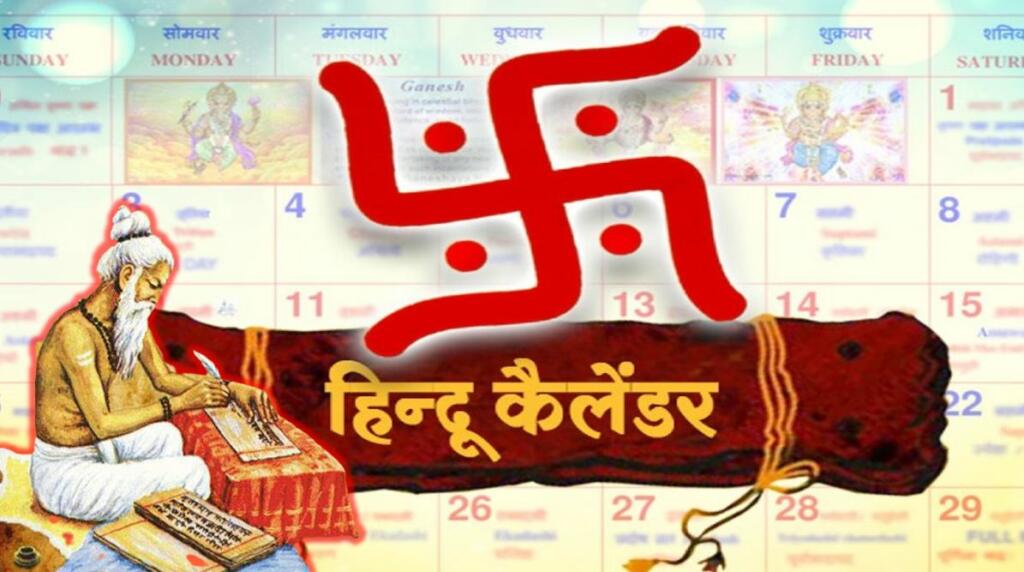Happy 2022! Another year is upon us. It’s time to address a fundamental issue now. Should India continue following the Gregorian calendar, which is purely Catholic in nature? The obvious answer many would give is an emphatic ‘Yes’. However, there are countries that do no conform to the Gregorian calendar. China is one. Therefore, the argument that India must retain usage of the Christian calendar to remain in sync with the world becomes redundant. China is doing just fine with dates, days and years without following a calendar given to the world by a Pope from Vatican. In fact, it takes pride in not following the Gregorian calendar.
Also read: IIT Kharagpur’s calendar destroys Aryan Invasion myth and leftists are rattled out of their wits
Prime Minister Narendra Modi, for the past four years, has not been wishing Indians a “Happy New Year” on January 1. Instead, he chooses to wish citizens “Happy 2022”. He has been doing so since 2019. PM Modi extends greetings for the year that has dawned, but does not say it is the new year which Indians should observe. This is because Indian new years do not fall on January 1. In fact, even within India, new years are observed in different months depending on regions within the country and communities prevalent there. Hindus, as a matter of fact, have two new years. One is the lunar new year, and the other is the solar new year.
https://twitter.com/narendramodi/status/1477088106209701892?s=20
The new year dates vary within India due to India being an ancient agricultural civilisation. Therefore, harvest seasons usually mark beginnings and endings of respective years.
The Hindu calendar and its advantages
The Hindu calendar is a combination of a lunar and solar calendar with its months based on lunar cycles. The lunar cycle lasts for 29.53 days. And every Hindu month is precisely equal to this time period. Every month in the Hindu calendar has equal number of days – 29.53. In the Hindu calendar, the number of days in a year amount to 354.36. Yet, it is known that a revolution around the sun by the earth takes about 365 days.
Also read: 13: PM Modi chose an unlucky date to inaugurate Kashi Vishwanath Complex because it’s not unlucky
This leads to a discrepancy of 10.9 days in a year. Such discrepancy, however, is accounted for by the Hindu calendar. 62 solar months equal 64 lunar months. So, to equalise the discrepancy and restore balance, the Hindu calendar has an added extra month to the calendar every 31st month. Such a month is called Malamasa.
Unlike the Gregorian calendar, the Hindu calendar has an equal number of days every month. In today’s times, this means that workers can be rest assured they will get paid equal salaries for the work they put in. For those working on fixed salaries, every 31-days bearing month requires additional labour to be put in for the same pay. For those who have fluctuating salaries, and those who get paid daily, every 30-days bearing month means their payday will come with a lower salary compared to months with 31 days. For an average Indian, this anomaly can upend many equations.
Oddities of the Gregorian calendar
The Gregorian calendar was proposed by Pope Gregory XIII in 1582. It is a modified version of the calendar established by Julius Ceasar, who had based his calendar on the ancient Egyptian calendar.
The Gregorian calendar is replete with problems nobody seems interested in addressing. To begin with, it is constructed around a Christian view of the world. And then, there are other rather significant problems with it as well – which India could avoid if it were to officially bring to use its indigenous calendar.
The earth needs 365.24219 days to complete one round of the sun. That is not equal to 365 days. Yet, to make things easy, the world considers every year to have only 365 days. To compensate for this shortfall, it adds one extra day to February every four years. However, this leap day which occurs every four years is an overcorrection.
By 1570 CE, the average year had 365.25 days in it — which is more than 365.24219. By the 1570s, those slight differences had added up. The calendar was now out of sync with the solar year by about 10 days. So, what did the Pope do to overcome this whammy? In 1582, Pope Gregory XIII declared that the 10 days following October 4 simply wouldn’t exist. The next day would effectively be October 15. But this was supposed to be a one-time cure.
Also read: A four-day work week in India will soon be a reality. But there is a catch
The current leap year system means the length of the average year is now 365.2425 days. This is still not equal to the 365.24219 days the earth actually takes to make a round of the sun.
For Hindus, every day of the week has an innate significance. Those who are out of touch with the panchang have no clue about the intricacies which every Hindu year brings along with it. To mainstream Indian traditions associated with days and months, it is essential that India dumps using the Gregorian calendar. If China can do it, India most definitely can as well.
